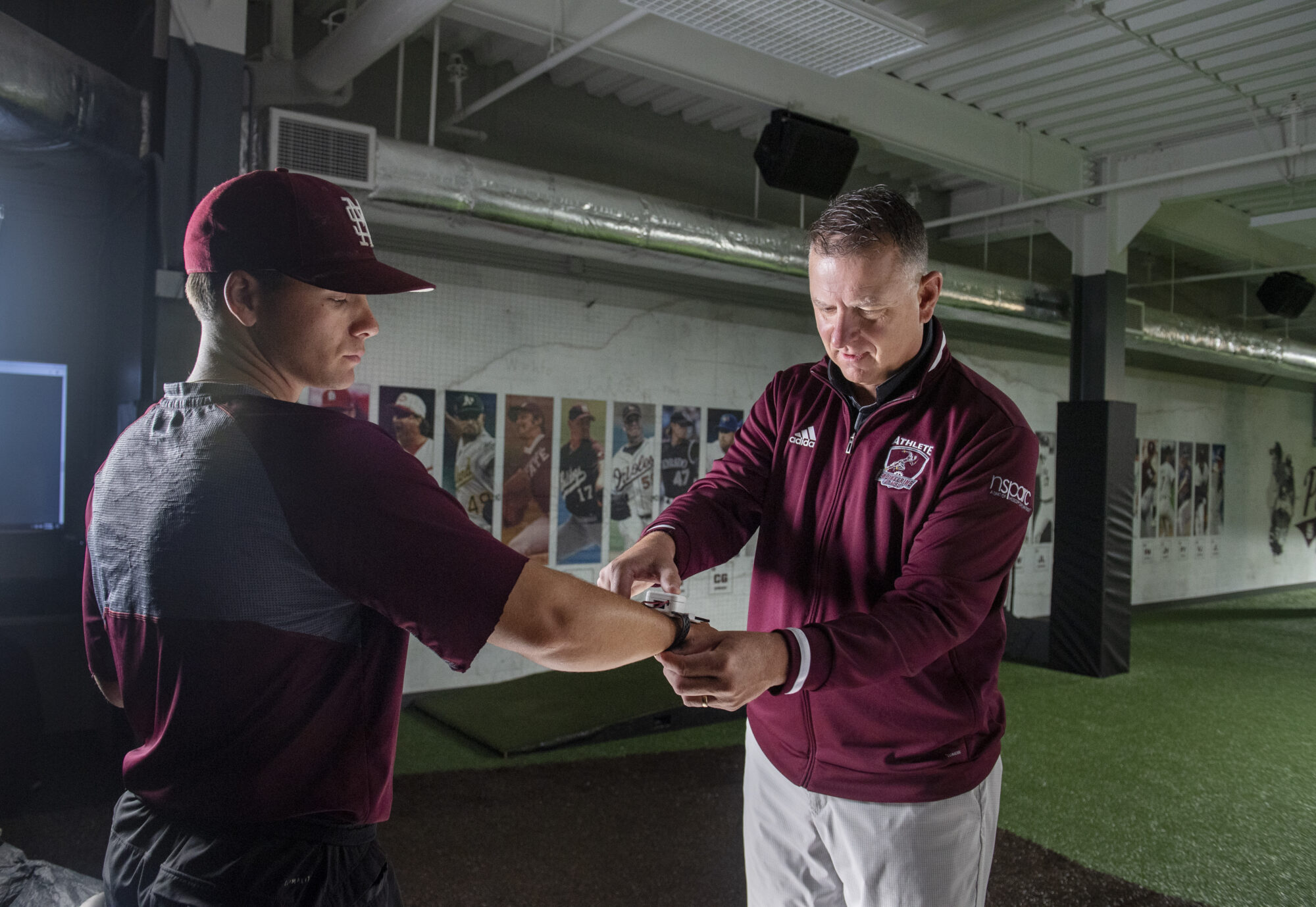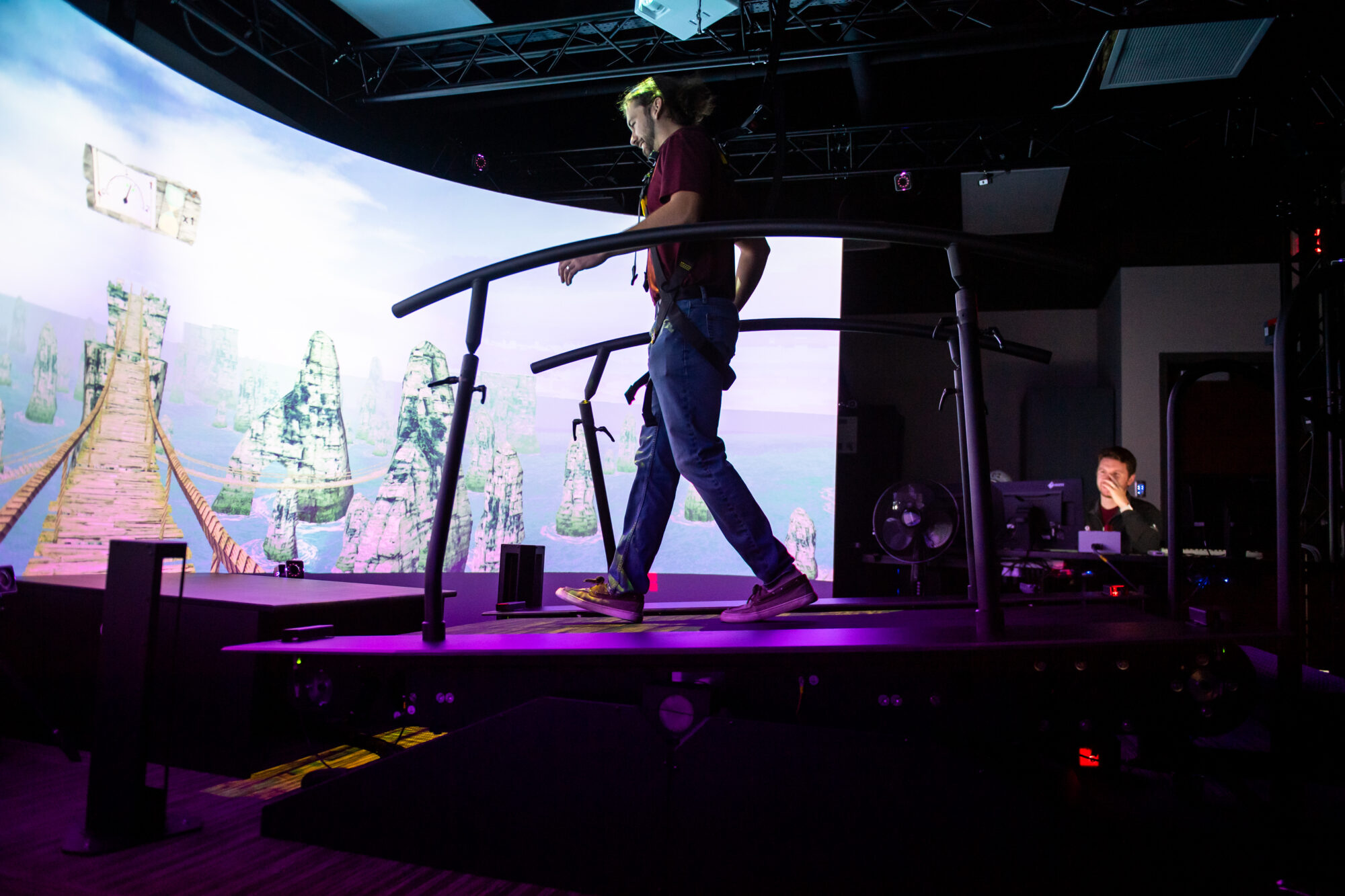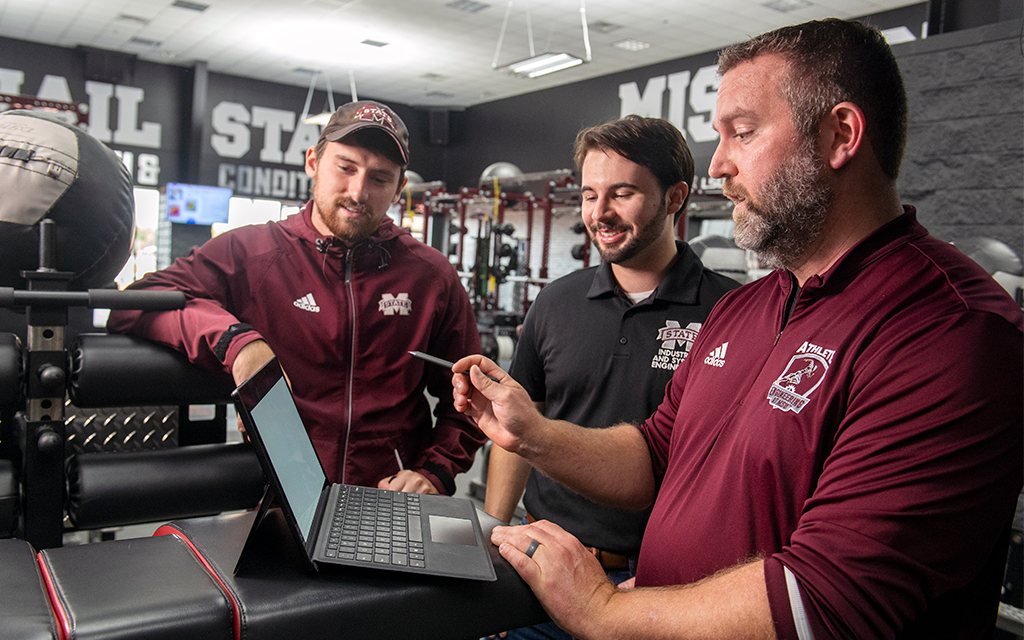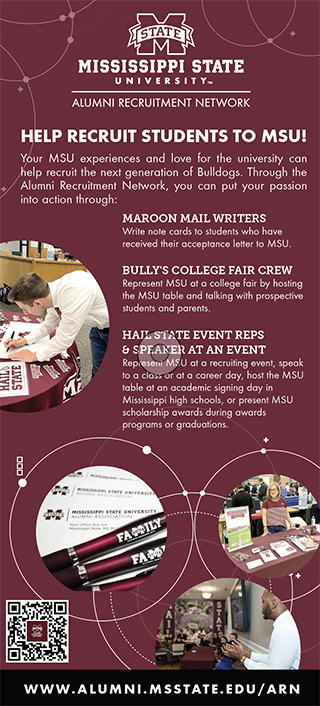Just off the main campus of Mississippi State, the Athlete Engineering Institute is revolutionizing health and performance across the state through cutting-edge research and interdisciplinary collaboration.
Reuben Burch, who directs the institute, and a team of engineers, kinesiologists and fashion designers are making significant strides in addressing the health challenges faced by Mississippians both on and off the sports field.
The institute primarily focuses on wearable devices that enable the collection of performance data, something it explored in early projects with Bulldog football and men’s and women’s basketball. Through sensors embedded in uniforms, shoes and other gear, the researchers could precisely track biomechanics.
This gives coaches real-time data on players’ activities during practice and games to encourage healthy, low-risk movement patterns and avoidance of dangerous positions or exertion levels.
“At the time, the goal was to support all the sports teams as much as possible by analyzing their data. Analyzing elite athletes generates goldmine datasets,” said Burch, who is also an associate professor of industrial and systems engineering. “Insights into things like throwing mechanics, lateral quickness and more can help optimize training programs.”



Burch said the goal, along with optimizing performance, was also to protect the players’ long-term health through an integrated, data-driven and personalized approach. Along the way, researchers within Athlete Engineering became technology integrators and early adopters. They realized that if these wearable technologies could be applied to sports athletes, then perhaps they could be applied to other types of “athletes,” including industrial workers and military personnel.
Burch said the team identified four distinct types of “athletes” who could benefit from its work. The goal, he explained, is to help the workforce, in Mississippi and beyond, remain healthy.
With this, the team—which includes Lesley Strawderman, a professor in industrial and systems engineering; electrical and computer engineering’s Brian Smith, an associate professor, and John Ball, a professor; and Charles Freeman, a former MSU fashion design and merchandising associate professor—expanded Athlete Engineering from a small program within the Center for Advanced Vehicular Systems and Bagley College of Engineering into a university institute that addresses a diverse range of human performance and human factors challenges.
Burch said they’re taking the lessons learned previously and applying them to the optimization of other types of athletes including:
- Tactical Athletes: Those in military or emergency responder roles
- Industrial Athletes: Those performing repetitive-motion tasks in manufacturing, warehousing, logistics and other industries
- At-Risk Athletes: Chiropractic and medical patients in rehabilitation and recovery
- Sport Athletes: Professional and student-athletes
Working with the engineers, kinesiology faculty Professor Adam Knight, Associate Professor Harish Chander and Assistant Professor Zack Gillen—who were among the initial team members—are leveraging their knowledge of human physiology, biomechanics, and strength and conditioning to understand and apply the data gathered from the wearable technology. Burch said this data-driven approach to injury mitigation and job design can help maintain happy, healthy and productive lives across the four areas.

The collaboration of Bagley College of Engineering faculty, as well as those from fashion design and merchandising and kinesiology, highlights the Athlete Engineering Institute’s commitment to cross-disciplinary understanding and applying scientific research to real-world problems.
Today, the Athlete Engineering Institute collaborates with teams from other leading athletic conferences, as well as several NBA and NFL teams and numerous companies and organizations like Toyota and Ingalls, focusing on optimizing worker safety through technological solutions and creating training programs. Their research also spans several other industries, including defense, manufacturing and healthcare.
“I’ve had a great opportunity to take my knowledge and apply it to some of the different research initiatives going on at the Athlete Engineering Institute,” Gillen said. “Whether it’s working with data from the football team or partnering with industry groups like Toyota and the Mississippi Highway Patrol, I’ve been able to contribute in ways I hope will have a real impact on the health and well-being of people across Mississippi.
“What makes this institute unique is the way it brings together so many different areas of expertise,” Gillen continued. “Instead of researchers working in silos, we’re able to combine our knowledge and skills to tackle complex problems in a more holistic way. That’s really the strength of this institute and Mississippi State University as a whole—the ability to leverage diverse perspectives for the greater good.”
Gillen has played a central role in the institute’s work, using his background in biomechanics and strength training to identify movement patterns and muscular imbalances that could lead to overuse injuries.
“Whether it’s a factory worker or a student-athlete, the underlying principles of injury prevention are often the same,” Gillen said. “By analyzing movement data and providing tailored training recommendations, we can help people avoid painful and costly injuries that can have a major impact on their lives and livelihoods.”
Beyond injury mitigation, the Athlete Engineering Institute is also dedicated to promoting physical activity and overall health in Mississippi, a state that has faced significant challenges in this area. Gillen has been passionate about communicating the institute’s research findings to the public, emphasizing the importance of accessible exercise options like body-weight training.
“Exercise is one of the most powerful tools we have for improving health, and it’s something that everyone can benefit from, regardless of their occupation or activity level,” Gillen said. “By sharing our research and providing practical recommendations, we hope to empower Mississippians to take charge of their own well-being and make positive changes in their lives.”
By Camille Carskadon

Get Moving to Keep Moving
Newton’s first law of motion forms the basis of much of what we know of physics. The general idea, however, also sums up tendencies of human beings—an object at rest will stay at rest, while an object in motion will stay in motion.
In short, the more sedentary a person is, the harder it will be for them to get moving. But the person who gets moving will likely keep their body moving, and moving well, for longer.
Zachary Gillen, an assistant professor of exercise physiology in MSU’s Department of Kinesiology, explained that as we age and take on more stationary tasks, it’s easy for our muscles to become weaker, disused and out of synch with each other. This can not only make it harder to find the desire to exercise but put us at a higher risk for injury.
To combat the body fatigue and muscle atrophy that often accompany sedentary jobs, Gillen recommends incorporating office-friendly exercises into the workday to break up time spent sitting at a desk.
He suggests taking five minutes every hour to complete two to three sets of 10 repetitions of the following. For each exercise, keep your navel pulled to the spine to engage your core muscles and provide the proper support.
- Body-Weight Squat – while keeping the back straight, bend at the knees into a squatting position. Hold the squat at the bottom for five to 10 seconds for an added stretch.
- Standing Calf Raises – While standing up straight, slowly rise onto your toes, then lower back down. Grasp your hands together in front of your chest for an added balance challenge or lightly rest your hands on the edge of the desk if additional stability is needed.
- Lunges – Step forward with one leg, then lower your body toward the ground with bended knees and then rise back to the starting position. Alternate legs. While lunging, be sure to keep your spine straight and your weight spread evenly between your front foot and back toes.
- Desk Push-Ups – Standing two to three steps from your desk, lean forward slightly and place your hands on the edge of your desk. Bend and extend your arms at the elbows to raise and lower your body in a push-up motion. Holding the push-up position for five to 10 seconds provides an added stretch.
- Double or Single-Leg Hops – Standing upright, slowly hop—either with both feet or alternating one foot at a time—with your core engaged for stability. Clasping your hands at your chest adds an additional balance challenge, while lightly resting hands on the desk helps provide stability.
He adds that taking a 10 to 20 minute walk or going up and down a flight of stairs two to three times every couple of hours can stimulate brain activity and have a big impact on muscle and joint health.










